Recasting the (Synchrosqueezed) Short-Time Fourier Transform as an Instantaneous Spectrum
Abstract
:1. Introduction



- We show that the two equivalent STFT interpretations lead to different ISs, and thus provide new insights into STFT. In particular, we show that the IS corresponding to the FT interpretation of STFT corresponds to an IS for each window grain, while on the other hand, a single IS corresponding to the FB interpretation of STFT exists when STFT is synchrosqueezed [14,15]. As a result, in the FT interpretation, the components have a restrictive fixed amplitude and fixed frequency, while in the FB interpretation, the components are AM–FM in nature. This results in significant conceptual and practical differences between the two interpretations.
- We contribute a new theoretical motivation for synchrosqueezing. In particular, in order to recast the FB interpretation as an IS, we show that reassignment in frequency is a fundamental requirement. This is in contrast to the view of synchrosqueezing largely as a heuristic approach to improve energy concentration in the time-frequency plane.
- By recasting the two STFT interpretations as an IS, we can leverage the 3D IS visualization [13] to contribute a novel visualization of STFT. This is advantageous because the 3D IS allows visualization of multiple aspects of the signal decomposition simultaneously, including both magnitude and phase of each signal component. While it may take the reader some time to become comfortable with the 3D visualization, we believe it has significant advantages in terms of interpretability and note that the STFT phase spectrum is almost never considered or visualized.
2. The Short-Time Fourier Transform
2.1. Fourier Transform Interpretation of STFT
2.2. Filterbank Interpretation of STFT
2.3. Complimentary Interpretations
3. Synchrosqueezed Short-Time Fourier Transform
4. Instantaneous Spectral Analysis
Relation to Frequency Domain Analysis
5. Recasting the Short-Time Fourier Transform as an IS
5.1. IS Corresponding to the FT Interpretation of STFT
5.2. IS Corresponding to the FB Interpretation of STFT
5.3. Discussion
6. Instantaneous Spectra Corresponding to STFT Interpretations for Example Signals
6.1. Complex Exponential
6.2. Linear FM Chirp
6.3. Bat Vocalization
7. Conclusions
Author Contributions
Funding
Conflicts of Interest
Notation
| signal under analysis | |
| window signal | |
| classical STFT corresponding to the FT interpretation | |
| modified STFT corresponding to the FB interpretation | |
| classical STFT corresponding to the FB interpretation | |
| an IS corresponding to the signal | |
| IS corresponding to the FT interpretation of the STFT | |
| IS corresponding to the FB interpretation of the STFT | |
| IS corresponding to the frequency domain (FT) |
References
- Gabor, D. Theory of communication. part 1: The analysis of information. J. Inst. Electr. Eng. III 1946, 93, 429–441. [Google Scholar] [CrossRef] [Green Version]
- Allen, J.B.; Rabiner, L. A unified approach to short-time Fourier analysis and synthesis. Proc. IEEE 1977, 65, 1558–1564. [Google Scholar] [CrossRef]
- Lim, J.S.; Oppenheim, A.V. Advanced Topics in Signal Processing; Prentice-Hall, Inc.: Hoboken, NJ, USA, 1987. [Google Scholar]
- Cohen, L. Time-Frequency Analysis; Prentice Hall: Hoboken, NJ, USA, 1995. [Google Scholar]
- Papandreou-Suppappola, A. (Ed.) Applications in Time-Frequency Signal Processing; CRC Press: Boca Raton, FL, USA, 2002. [Google Scholar]
- Stanković, L.; Daković, M.; Thayaparan, T. Time-Frequency Signal Analysis with Applications; Artech House: Norwood, MA, USA, 2014. [Google Scholar]
- Boashash, B. Time-Frequency Signal Analysis and Processing: A Comprehensive Reference; Academic Press: Cambridge, MA, USA, 2015. [Google Scholar]
- Flandrin, P. Explorations in Time-Frequency Analysis; Cambridge University Press: Cambridge, UK, 2018. [Google Scholar]
- Gröchenig, K. Foundations of Time-Frequency Analysis; Springer Science & Business Media: Berlin/Heidelberg, Germany, 2001. [Google Scholar]
- Meignen, S.; Oberlin, T.; Pham, D. Synchrosqueezing transforms: From low-to high-frequency modulations and perspectives. Comptes Rendus Phys. 2019, 20, 449–460. [Google Scholar] [CrossRef]
- Kodera, K.; Gendrin, R.; DeVilledary, C. Analysis of time-varying signals with small BT values. IEEE Trans. Acoust. Speech Signal Process. 1978, 26, 64–76. [Google Scholar] [CrossRef]
- Auger, F.; Flandrin, P. Improving the readability of time-frequency and time-scale representations by the reassignment method. IEEE Trans. Signal Process. 1995, 43, 1068–1089. [Google Scholar] [CrossRef] [Green Version]
- Sandoval, S.; De Leon, P.L. The Instantaneous Spectrum: A General Framework for Time-Frequency Analysis. IEEE Trans. Signal Process. 2018, 66, 5679–5693. [Google Scholar] [CrossRef]
- Auger, F.; Flandrin, P.; Lin, Y.; McLaughlin, S.; Meignen, S.; Oberlin, T.; Wu, H. Time-frequency reassignment and synchrosqueezing: An overview. IEEE Signal Process. Mag. 2013, 30, 32–41. [Google Scholar] [CrossRef] [Green Version]
- Oberlin, T.; Meignen, S.; Perrier, V. The Fourier-based synchrosqueezing transform. In Proceedings of the 2014 IEEE International Conference on Acoustics, Speech and Signal Processing (ICASSP), Florence, Italy, 4–9 May 2014; pp. 315–319. [Google Scholar]
- Auger, F.; Flandrin, P. The why and how of time-frequency reassignment. In Proceedings of the IEEE-SP International Symposium on Time- Frequency and Time-Scale Analysis, Philadelphia, PA, USA, 25–28 October 1994; pp. 197–200. [Google Scholar]
- Flandrin, P. Time-Frequency/Time-Scale Analysis; Academic Press: Cambridge, MA, USA, 1998. [Google Scholar]
- Oberlin, T.; Meignen, S.; Perrier, V. Second-order synchrosqueezing transform or invertible reassignment? Towards ideal time-frequency representations. IEEE Trans. Signal Process. 2015, 63, 1335–1344. [Google Scholar] [CrossRef] [Green Version]
- Pham, D.H.; Meignen, S. High-order synchrosqueezing transform for multicomponent signals analysis—With an application to gravitational-wave signal. IEEE Trans. Signal Proc. 2017, 65, 3168–3178. [Google Scholar] [CrossRef] [Green Version]
- Kodera, K.; DeVilledary, C.; Gendrin, R. A new method for the numerical analysis of non-stationary signals. Phys. Earth Planet. Int. 1976, 12, 142–150. [Google Scholar] [CrossRef]
- Friedman, D. Instantaneous-frequency distribution vs. time: An interpretation of the phase structure of speech. In Proceedings of the IEEE International Conference on Acoustics, Speech, and Signal Processing, Tampa, FL, USA, 26–29 April 1985; Volume 10, pp. 1121–1124. [Google Scholar]
- Maes, S. Synchrosqueezed representation yields a new reading of the wavelet transform. Wavelet Appl. II 1995, 2491, 532–560. [Google Scholar]
- Daubechies, I.; Maes, S. A nonlinear squeezing of the continuous wavelet transform based on auditory nerve models. Wavelets Med. Biol. 1996, 527–546. [Google Scholar]
- Thakur, G.; Wu, H. Synchrosqueezing-based recovery of instantaneous frequency from nonuniform samples. SIAM J. Math. Anal. 2011, 43, 2078–2095. [Google Scholar] [CrossRef] [Green Version]
- Griffin, D.; Lim, J. Signal estimation from modified short-time Fourier transform. IEEE Trans. Acoust. Speech Signal Process. 1984, 32, 236–243. [Google Scholar] [CrossRef]
- Nawab, S.; Quatieri, T.; Lim, J. Signal reconstruction from short-time Fourier transform magnitude. IEEE Trans. Acoust. Speech Signal Process. 1983, 31, 986–998. [Google Scholar] [CrossRef]
- Boucheron, L.E.; De Leon, P.L. On the inversion of mel-frequency cepstral coefficients for speech enhancement applications. In Proceedings of the International Conference on Signals and Electronic Systems, Krakow, Poland, 14–17 September 2008; pp. 485–488. [Google Scholar]
- ISA.jl: Instantaneous Spectral Analysis in Julia. 2022. Available online: https://github.com/NMSU-ISA/ISA/ (accessed on 3 January 2022).
- Sandoval, S. Instaneous Spectral Analysis (in Matlab). 2018. Available online: https://github.com/ssandova/ISA-public (accessed on 3 January 2022).
- Daubechies, I.; Wang, Y.; Wu, H.T. ConceFT: Concentration of frequency and time via a multitapered synchrosqueezed transform. Philos. Trans. R. Soc. A 2016, 374, 20150193. [Google Scholar] [CrossRef]
- Behera, R.; Meignen, S.; Oberlin, T. Theoretical analysis of the second-order synchrosqueezing transform. Appl. Comput. Harmon. Anal. 2018, 45, 379–404. [Google Scholar] [CrossRef] [Green Version]
- Pham, D.H.; Meignen, S. Demodulation algorithm based on higher order synchrosqueezing. In Proceedings of the European Signal Processing Conference (EUSIPCO), A Coruna, Spain, 2–6 September 2019; pp. 1–5. [Google Scholar]
- Bat Echolocation Chirp. 2022. Available online: https://www.ece.rice.edu/dsp/software/bat.shtml (accessed on 3 January 2022).
- Wang, S.; Chen, X.; Tong, C.; Zhao, Z. Matching synchrosqueezing wavelet transform and application to aeroengine vibration monitoring. IEEE Trans. Instrum. Meas. 2016, 66, 360–372. [Google Scholar] [CrossRef]
- Yu, G.; Yu, M.; Xu, C. Synchroextracting transform. IEEE Trans. Ind. Electron. 2017, 64, 8042–8054. [Google Scholar] [CrossRef]
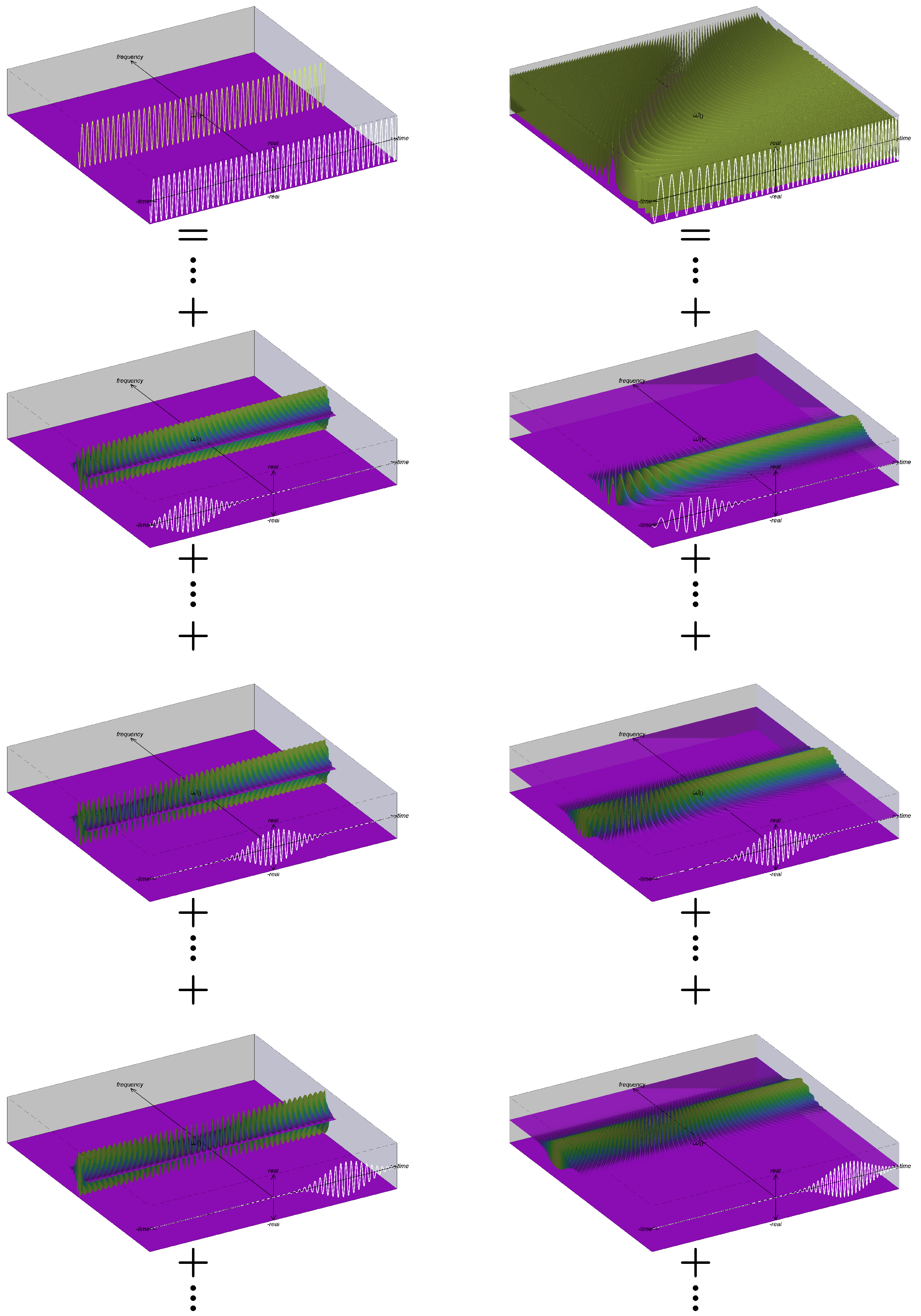
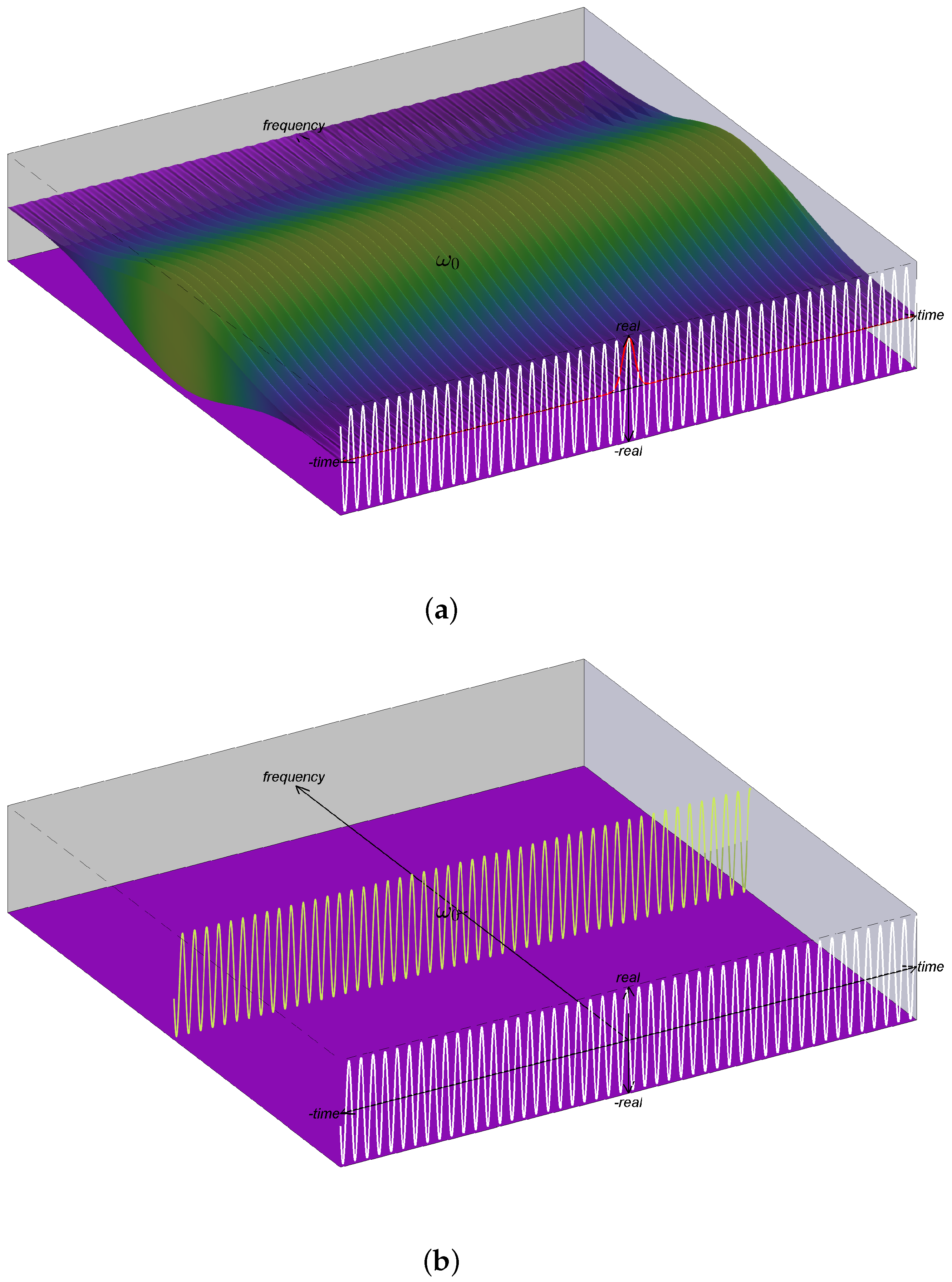
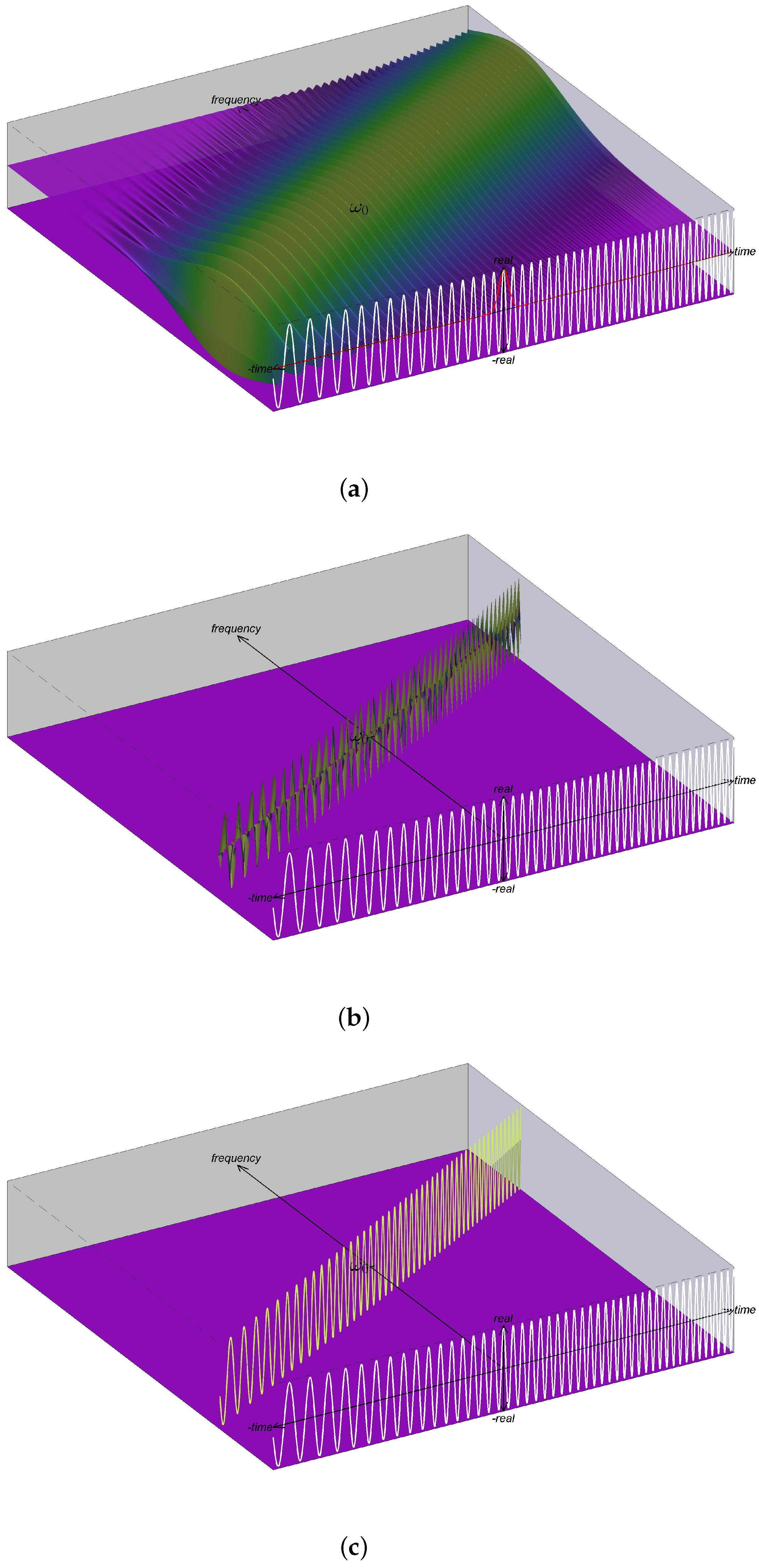
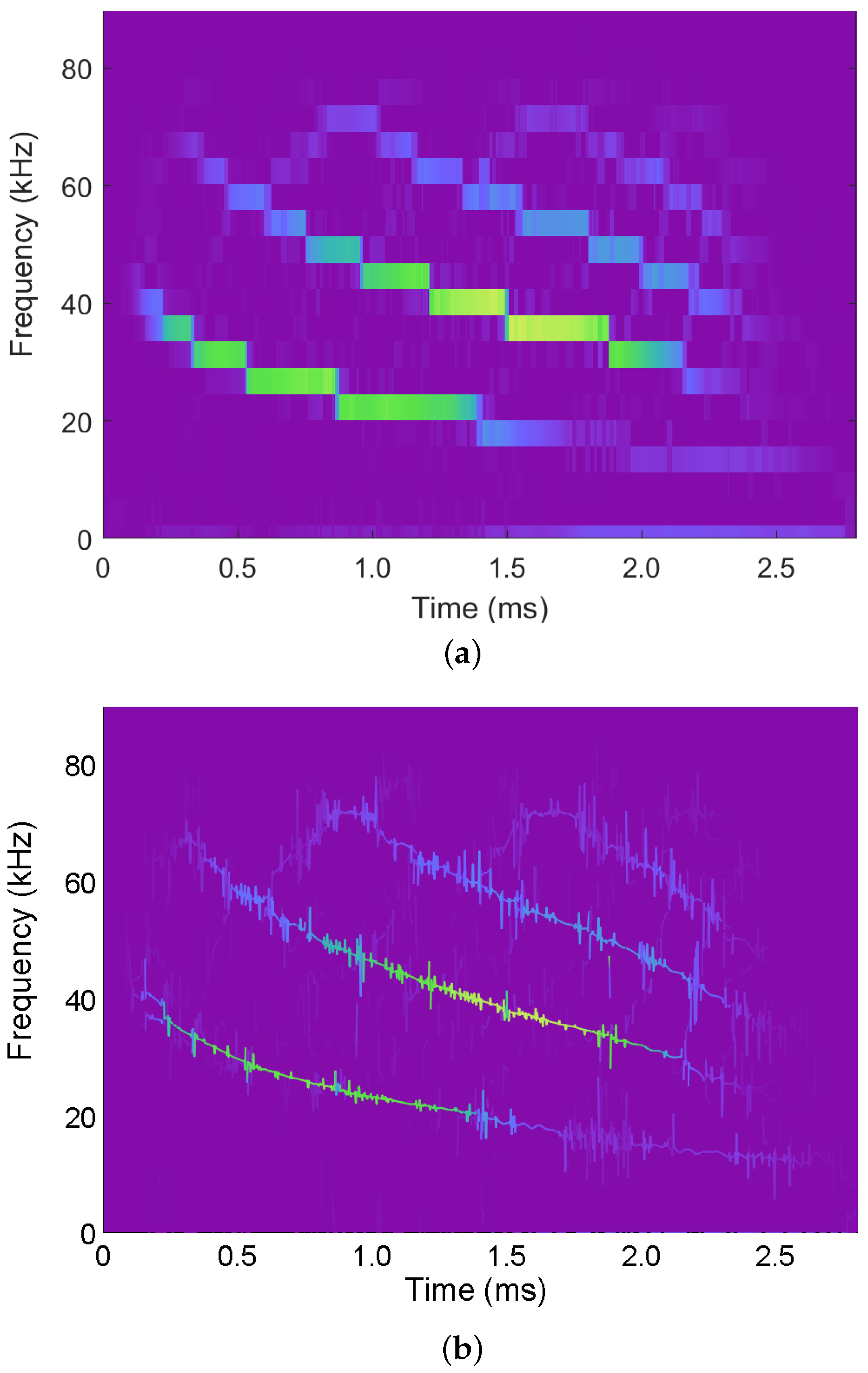
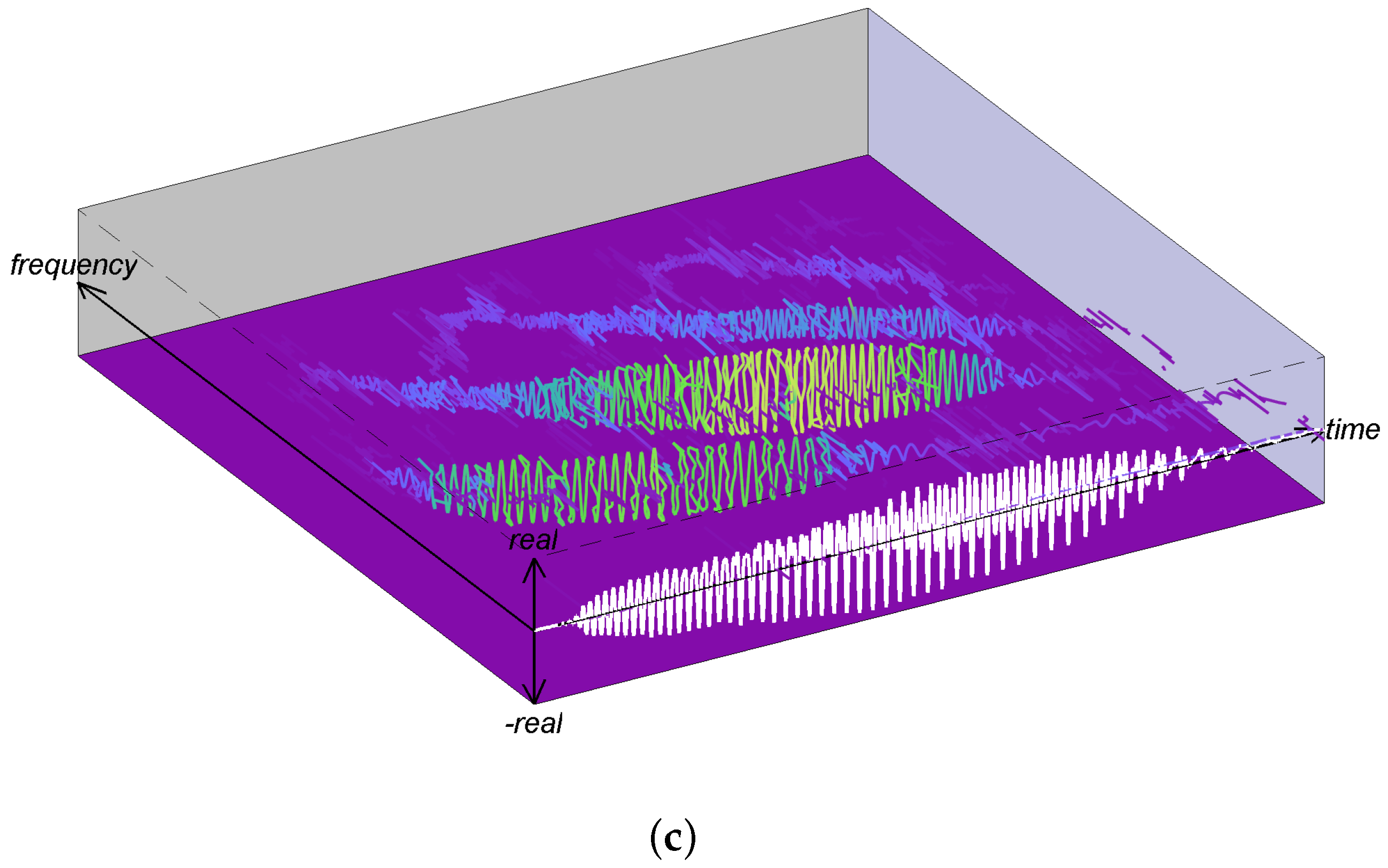
Publisher’s Note: MDPI stays neutral with regard to jurisdictional claims in published maps and institutional affiliations. |
© 2022 by the authors. Licensee MDPI, Basel, Switzerland. This article is an open access article distributed under the terms and conditions of the Creative Commons Attribution (CC BY) license (https://creativecommons.org/licenses/by/4.0/).
Share and Cite
Sandoval, S.; De Leon, P.L. Recasting the (Synchrosqueezed) Short-Time Fourier Transform as an Instantaneous Spectrum. Entropy 2022, 24, 518. https://doi.org/10.3390/e24040518
Sandoval S, De Leon PL. Recasting the (Synchrosqueezed) Short-Time Fourier Transform as an Instantaneous Spectrum. Entropy. 2022; 24(4):518. https://doi.org/10.3390/e24040518
Chicago/Turabian StyleSandoval, Steven, and Phillip L. De Leon. 2022. "Recasting the (Synchrosqueezed) Short-Time Fourier Transform as an Instantaneous Spectrum" Entropy 24, no. 4: 518. https://doi.org/10.3390/e24040518
APA StyleSandoval, S., & De Leon, P. L. (2022). Recasting the (Synchrosqueezed) Short-Time Fourier Transform as an Instantaneous Spectrum. Entropy, 24(4), 518. https://doi.org/10.3390/e24040518






